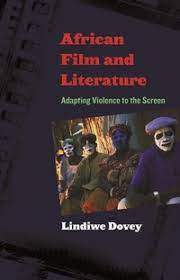Analyzing a range of South African and West African films inspired by African and non-African literature, Lindiwe Dovey identifies a specific trend in contemporary African filmmaking-one in which filmmakers are using the embodied audiovisual medium of film to offer a critique of physical and psychological violence. Against a detailed history of the medium's savage introduction and exploitation by colonial powers in two very different African contexts, Dovey examines the complex ways in which African filmmakers are preserving, mediating, and critiquing their own cultures while seeking a united vision of the future. More than merely representing socio-cultural realities in Africa, these films engage with issues of colonialism and postcolonialism, "updating" both the history and the literature they adapt to address contemporary audiences in Africa and elsewhere. Through this deliberate and radical re-historicization of texts and realities, Dovey argues that African filmmakers have developed a method of filmmaking that is altogether distinct from European and American forms of adaptation.
- List of Film Stills
- Preface
- Acknowledgments
- List of
Abbreviations
- Introduction: “African Cinema”: Problems and Possibilities
- 1. Cinema and Violence in South Africa
- 2. Fools and Victims: Adapting Rationalized Rape into
Feminist Film
- 3. Redeeming Features: Screening HIV/AIDS, Screening Out Rape
in Gavin Hood’s Tsotsi
- 4. From Black and White to “Coloured”: Racial Identity in 1950s and 1990s South Africa in Two
Versions of A Walk in the Night
- 5. Audio-visualizing “Invisible” Violence: Remaking and Reinventing
Cry, the Beloved Country
- 6. Cinema and Violence in Francophone West Africa
- 7. Losing the Plot, Restoring the Lost Chapter: Aristotle
in Cameroon
- 8.African Incar(me)nation: Joseph Gaï Ramaka’s Karmen
Geï (2001)
- 9. Humanizing the Old Testament’s Origins, Historicizing Genocide’s
Origins: Cheick Oumar Sissoko’s La Genèse (1999)
- Conclusion
- Notes
- Filmography
- Bibliography
- Index

